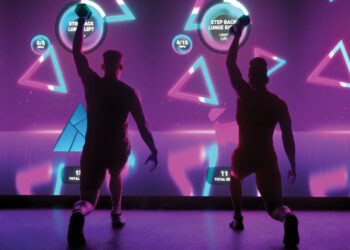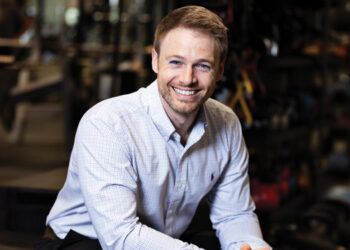Rope training machines gain ground and bring functional fitness to commercial success.
When gym owners allocate funds towards equipment, getting the most bang for the buck is a top priority. Among all of the equipment available, rope trainers have emerged as an indispensable piece suitable for any club.
Rope training: What it is and what it isn’t
When you think of rope training, there is a bit of confusion. Not to be confused with battle ropes, rope trainers are more commonly recognized as rope climbing simulators. However, while one may ask, “Why not just hang a rope from the rafters and be done with it?” the answer is simple — rope trainers are not just rope climbing simulators. Yes, they do make climbing a rope accessible to all, but they also perform an exhaustive range of other functions that make climbing a rope in gym class look downright primitive.
Of any single machine, you would be hard pressed to find one that will allow for both cardiovascular and strength conditioning. That alone puts a rope training system in a class by itself. The rope can be pulled up, as in a deadlift motion, or in a downward climbing motion. A free range of motion and selectorized resistance make each rope trainer capable of performing hundreds of exercises to work any movement and train any function.
Rope trainers that allow for different resistance angles are also available, taking the rope training experience to a whole new level. A versatile tool for sport-specific training facilities, coaches find the functionality especially valuable for giving their athletes an edge. In addition, rope trainers develop grip strength; fundamental for performing a range of other functions.
Yes, you can pull on the rope and climb your way to fitness too, but the variety of exercises that can be performed provide anyone — regardless of fitness level — with an intense and engaging challenge. And unlike a ceiling suspended rope, there’s no risk of falling from the ceiling — always a plus.
Safety
Aside from eliminating any risk of falling, a rope trainer that employs a frictionless resistance system, such as a dynamic magnetic brake (DMB) system, delivers additional benefits. The DMB optimizes resistance in such a way that there is no stop/start motion when pulling, but rather a smooth performance with optimal resistance at each point in the exercise. This not only provides the user with instant feedback, but also virtually eliminates the risk of joint injury from a jerking, uneven performance. This, combined with the free range of motion, makes rope trainers a model tool for rehabilitation.
What do gym owners and members think?
Never before have we had such a window into the minds of consumers as we do in today’s social media-saturated landscape. Rarely do you see anyone praising their experience on the treadmill. Rope trainers, for those in the know, have become a favorite. Gym members have developed a fondness for them and express it, often in colorful and enthusiastic language. This can be hard to put into words if you’ve never tried it, but a peek at some of the chatter about the “rope machine” can give an idea of the love-hate relationship that comes with a workout on such an intense piece of equipment.
Having a proven success record for driving personal training revenue and boosting member retention, gym owners and general managers have come to rely on rope training systems as a turn-key solution for group training, functional training stations and as a centerpiece to competitive events. “Rope Training Challenges” create a buzz that can be tough to replicate with, often less dynamic, standard gym offerings. As rope trainers are non-electric, low maintenance and offer maximum utility for gym floor space, it makes them a top pick for general managers and trainers alike.
Among all of the different equipment out there, rope trainers are quickly gaining ground as a fitness favorite. As a new modality, the applications of rope training are still evolving. In time we are sure to see innovative programming from trainers and fitness practitioners, translating to increased benefit to gyms and the members they serve.
Stay ahead in the fitness industry with exclusive updates!
This article was written as a collaborative effort between Lorraine Popescu and Mike Cole. Popescu is the co-founder and vice president of Marpo Kinetics. She can be reached at 925.606.6919 or lorraine@marpokinetics.com. Cole, MA Kinesiology, is the director of education at Marpo Kinetics. He can be reached at mikec@marpokinetics.com.










